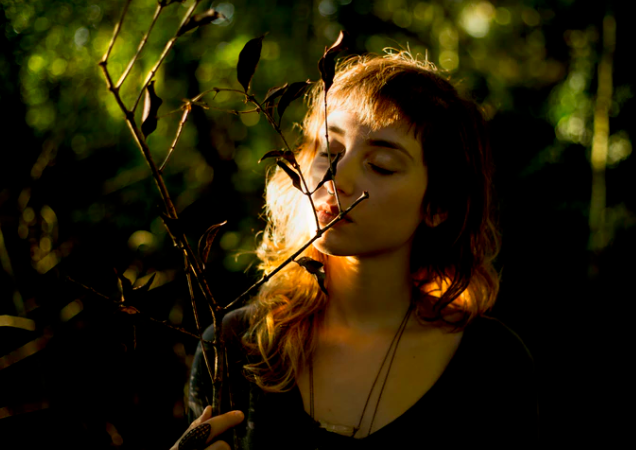Sitting with a small group of friends at dinner on New Year’s Eve, we went around and reflected on the past decade and what we hoped to see manifest in 2020.
It was less about resolutions (personally, I hate resolutions as they set us up to fail), and more about intentions or areas to focus on. When it was my turn, I found a conversation I’d had with a client earlier that day came to mind.
My client and I discussed how this next year, after all of her inner work in 2019 around finding her voice, she needed to now shift to focusing on releasing or letting go. This then led to a conversation about how she needed to find the balance between action and surrender.
In yoga philosophy, the terminology for this balance is sthira and sukha. The Sanskrit word sthira roughly translates to “steadiness,” while sukha translates to “ease” (or literally, to “good space”).
I found myself at dinner speaking about this same topic for my personal intention for 2020, and I realized it was one that many could probably relate to. So, what does this even mean? To surrender and release control, and yet also take action? It feels like an oxymoron. Even as I write this, I struggle with articulating it perfectly, but maybe that’s the point—stay with me.
In the simplest terms, my job as a therapist and coach is to help people find more balance, ease, and grace in their lives while pulling from their own inner well of resiliency. This is done, in part, through a deep dive into their history, their patterns, defenses, and the reason for their development, thereby helping strengthen the muscles of self-awareness, compassion, and mindfulness, and helping them find the courage to choose the road less traveled rather than the knee-jerk reactions that have always been their go-to.
That seems like a lot to accomplish, and it can be, but it’s done in increments. While baby steps can feel like they are taking forever to actually happen, the sometimes subtle feeling of more space, more softening, and more acceptance of struggle is something many seem to notice and report on after only a few weeks.
This lack of space and balance so many wrestle with is exacerbated by the fact that we tend to fill our lives with frenzy and drama. In western culture, we have especially lost our connection to nature, “God,” and/or faith in something bigger than ourselves, and we have replaced it with the worship of busyness. We’re always rushing, accomplishing, and trying to prove our worth through productivity and doing. We find little value in slowing down, breathing in the soft fragrance of the blooming jasmine bushes, taking in our friend’s glittering eyes while they relate an exciting story, or sitting and noticing how our bodies softly breathe themselves without any help from us.
Part of the work I do with clients is to help them clear away the unnecessary emotional clutter in their lives that prevents us from doing just that; slowing down. This process is not easy. The clutter is usually something that we not only attach our personal value to, but it becomes a part of our identity. We use this clutter, this incessant emotional and physical busyness, as a distraction. A protective shield against sitting in stillness, with our own thoughts, fears, and inadequacies.
Here are a few examples that might help make it more tangible:
“I’m the person people always come to for advice.”
Translation: “When I’m helping others solve their problems it makes it easier to not face or solve my own.”
“I like taking charge and being the one to organize everything for my family and friends. I plan the trips, I split the bill, I manage the household.”
Translation: “When I’m at the helm I feel more in control. When things aren’t done the way I like it gives me anxiety.”
“I’m the peacekeeper and the joke maker. I like making people feel good, relieving the tension in the room, and making people laugh.”
Translation: “I can’t handle other people’s uncomfortable emotions because I can’t handle my own, so I make them feel better to alleviate my own discomfort.”
In any of those three examples, we might think, what’s the big deal? Especially if a part of me gets satisfaction out of the action. As a therapist who’s been trained to notice patterns and defenses, these stand out to me as examples of ways we wrap ourselves up in others so as not to focus on ourselves. It’s about the motivation or intention behind the action, not just the action itself.
What happens when we keep ourselves behind a shield of these defenses that keep us emotionally and sometimes physically busy and distracted? Our inner voice, the one that knows what is best for us, what would be fulfilling, what would help us grow, our direction, path, and purpose in each moment gets squelched. Instead, our ego, the voice whose sole purpose it is to survive at all costs, gets fed and strengthened. It is only in the quiet of observation (of self and others) that we are we able to hear that inner voice; our intuition.
Inner reflective work like therapy, yoga, and mindfulness help us slow down and get more in touch with the “why” behind our patterns of distraction and busyness. Once we understand the why, we can then experiment with stepping back from the habits and choosing instead to sit with our discomfort and anxiety—to sit with ourselves. And then, the more we choose, over and over, to slow down and be still, the louder our quiet inner voice becomes. The quiet voice that is so easily drowned out by the much louder voices of deadlines, parental expectations, fear of letting others down, of not being lovable, etc., etc., etc.
And, it is only through strengthening our intuition, our natural cadence, our connection to that innermost part of our self, that we can find the resiliency, steadiness, balance, ease, and grace that I spoke to earlier.
So, how does this practice of sukha, of ease, of living in the “good space,” then get balanced with sthira, steadiness, action? Many of my clients, and I myself, have struggled with the fear that “surrender” translates into laziness, into waiting for things to happen to me. That if I get too still the world will pass me by.
I think the point is, we should let things pass by that don’t serve us. We should step back and not busy ourselves with actions and emotions that are meant solely as a way to hide from ourselves and our anxieties. Those might keep us busy, make us temporarily feel “better,” they might even be a form of inertia but, they are distracting us from the real work. It takes stillness to recognize and then shift our focus to that real work of choosing authenticity over outer acceptance, of choosing to speak up over keeping the peace, of choosing to let ourselves be seen in our imperfectness over exhaustingly pretending we’ve got it all together.
We can’t think or bulldoze our way through the work. That is ego talking. Ego is created from outside voices, demands, and expectations and is only concerned with how we look to the world.
In yoga asana (the physical poses of yoga), we learn through practice that we have to find steadiness in a pose, sthira, in order for the ease, sukha, to be realized. And then by finding and breathing into the opening and ease, we find more steadiness and strength, more action. It is a continuous cycle, a balance between the two. One cannot exist without the other and they fluctuate with each breath if we hold our focus and attention.
Cultivating sthira and sukha happens through the work of strengthening awareness and thus increasing our capacity for the stillness required to respond thoughtfully instead of reacting out of habit and patterns. It is a practice of paying attention to the quiet voice rather than the ego—moment to moment. If you are paying attention, you will be able to tap into what the right action should then be in any given situation.
So, maybe that’s it, for 2020 and beyond, it’s about cultivating the balance between stillness and action. Realizing one cannot exist without the other and that it’s a practice done moment to moment. There isn’t some big aha moment where your path is illuminated and it all falls into place. It comes when a subtle sense of both ease and momentum are felt together, cycling, pulsing.
And when your radar, your intuition, is strong enough to remind you (and you are strong enough to shut up and listen) that your balance is off, and that you need to return to a place of stillness in order to hear and know what your next step should be.
~
“Rushing into action, you fail. Trying to grasp things, you lose them. Therefore the master takes action by letting things take their course. He remains as calm at the end as at the beginning.” ~ The Tao
~












Read 1 comment and reply